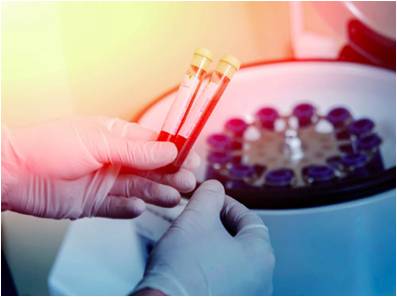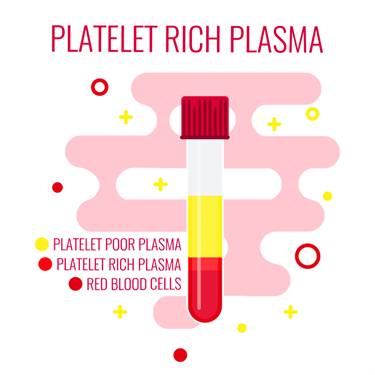
Chiropractor Chandler AZ
WHAT CAN YOU EXPECT FROM PRP THERAPY?
WHAT IS PRP PROLOTHERAPY?
Prolotherapy is the treatment method related to the medical field known as Orthobiologics. This medical field deals with the treatment methods that use the biological components and manipulate the body's ability to heal itself.

There are different types of Prolotherapy based on the material used to heal damage and relieve pain. Platelet-rich plasma Prolotherapy is a type of prolotherapy in which the blood of a person is used to treat the chronic pain and damage in any part of the body.
Human blood consists of different components that perform different roles in the body. Some protect the body and some nourishes the body. Platelets are 4% of our blood and their roles are:
- Blood clotting
- Cell regeneration
- Cell repair
Platelets are manipulated for their ability to heal by increasing their concentration from 4% to 95% in plasma. These platelets activate the body's own repair machinery and accelerate the healing process.
PLATELET-RICH PLASMA PREPARATION
For platelet-rich plasma preparation, 30-60 ml of venous blood is drawn under sterile conditions. It is advised to use 18 or 19g butterfly needle to avoid trauma or irritation to the platelets. The blood is then centrifuged for 15 minutes at 3,200 rpm.
Platelet-rich plasma is separated and there is approximately 3-6 cc of platelet-rich plasma available depending on the initial blood drawn from the patient.
INJECTION PROCEDURE
To increase the accuracy of location of injection, dynamic musculoskeletal ultrasound with a transducer of 6–13 Hz is used. The patient receives the injection directly into the site of injury under sterile conditions. The patient is observed for 10 -15 minutes and if there is no pain or any side effect, the patient is discharged.
The patient is re-checked after 2-6 weeks of the injection to follow infection, injection site pain or any other side effect.

HOW DOES PLATELET-RICH PLASMA PROLOTHERAPY WORK?
Platelets are unique as they contain Alpha granules. Alpha granules are like small packages that contain growth factors. Growth factors are proteins produced by the body that activate growth cells. When the blood is injected at the site of pain/injury, platelets get activated. Upon activation, they release growth factors which start repair cell activation and proliferation. The damage repair is done in three stages:
- Inflammation phase: It lasts for 2-3 days. In this phase, transforming growth factor betas are released which help regulate cell migration and replication at the site of injury.
- Proliferation phase: It lasts for 2-4 weeks. Vascular endothelial growth factors, platelets derived growth factors and epithelial growth factors are released in this phase and they stimulate the formation of blood vessels at the site of injury and tissue damage as well as increase the tendon formation and collagen synthesis and stem cell replication.
- Remodeling phase: It lasts over a year. In this phase, collagen is matured and strengthened and injury is healed.
The complete repair process can take up to a year or more.
USES OF PLATELET-RICH PLASMA PROLOTHERAPYPlatelet-rich plasma Prolotherapy is effective in the treatment of following medical conditions:
- Tendonitis in different joints
- Acute Ligament injury
- Muscle injuries
- Acceleration of healing process after surgery
- Arthritis
- Cartilage damage
- Fractures
- Musculoskeletal pain
- Acne removal
- Treatment for wrinkles
- Treatment for dull skin
- Hair re-growth
PRP Prolotherapy is a promising technique that can be used in different medical fields.
WHAT TO EXPECT FROM PLATELET-RICH PLASMA PROLOTHERAPY
Platelet-rich plasma therapy offers a solution to the problems that are sometimes considered to be untreatable by conventional treatment methods or conventional treatment methods fail to treat them. It is important to know the potential of PRP Prolotherapy and what can we expect from this marvelous treatment method:
PRP Prolotherapy can treat musculoskeletal pain caused by a broken tendon, damaged ligament, fractured bone, and muscle damage or cartilage degeneration. In 2006, Stanford University evaluated the effectiveness of platelet-rich plasma Prolotherapy in a research for chronic elbow tendinosis. The results showed 93% pain reduction 2 years after the treatment. Several animals and in vitro studies have shown the ability of PRP Prolotherapy to promote the growth of fractured bone. The efficiency of PRP Prolotherapy in cartilage repair is established by various researches. In one research, rabbit models of cartilage injury were administered with PRP injections and after 4 and 22 weeks, samples were evaluated by microscopic examination, histological evaluation, and microcomputed tomography. The results showed cartilage improvement and bone formation in the rabbits treated with PRP. PRP Prolotherapy has shown positive results in healing the broken tendons in rat models. In arthritis patients, PRP Prolotherapy improves overall joint homeostasis, reduces synovial membrane hyperplasia and moderate the cytokine level, thus leads to improved cartilage condition, without affecting the cartilage structure.
Patients receiving PRP injection must expect some discomfort and pain at the site of injection after receiving the treatment. It can last for 2-3 days and medication may be required to treat the pain. As PRP Prolotherapy is an invasive method, there are risks of needle breakage, infection, nerve damage and muscle damage at the injection site.
Patients must expect the possibility of symptoms to worsen after injection. This is likely due to the stimulation of the body's natural response to inflammatory mediators. There is also a chance of no pain relief at all.
PRP Prolotherapy uses the blood of the patient that is withdrawn under sterile conditions by certified personals. After centrifugation, the PRP is injection back into the body by using a sterile syringe. Thus there is no chance of blood-borne disease transfer. You can expect a disease-free treatment when getting a PRP injection.
PRP Prolotherapy uses the very own blood of the patient that 100% matches with patient's ingenious blood, there are 0% chances of immune or allergic reaction that are very high in other methods that involve the use of another person's blood. Immune and allergic reactions can sometimes be very dangerous and can lead to death so, in PRP Prolotherapy, the patient can be fear-free from the risk of immune or allergic reaction.
PRP Prolotherapy does not cause scar formation which is a very obvious issue if a patient goes for surgery or other invasive methods.
PRP Prolotherapy takes quite some time to heal the pain as compared to other alternative treatment methods such as cortisone injections and pain medications. It can take up to a year to relieve the pain as compared to cortisone injections which relieves pain immediately. It relieves the pain by healing the cause of the pain. In an ideal situation, once the PRP Prolotherapy heals the injured area, the pain won't come back.
PRP Prolotherapy targets the cause of pain. Other treatment methods. such as pain medication, mask the pain without treating the cause of pain which sometimes can increase the damage. Surgery also sometimes fails to heal the damage and it also takes very long to recover. PRP Prolotherapy heals the actual cause of pain whether it be a fracture, tendon or ligament damage, ora muscle injury so there is no chance of damage progression.
Other treatment methods have some limitations and they cannot be used in those parts of the body that do not have the ability to grow or grow very slowly such as nerves and bones. Even surgery is sometimes useless to treat those fractures where the bone has very little ability to grow itself. PRP Prolotherapy activates and accelerates the body's own healing mechanism and it can be used effectively for bone fracture repair and nerve repair. Also, it can be used in any part of the body: your face, hair, knees, ankles or thumbs.
Platelet-rich plasma Prolotherapy is considered cost effective as compared to conventional treatment methods such as surgery, but it is not a cheap treatment method. One PRP injection can cost up to $800-$1000 depending on the location of the treatment center. PRP Prolotherapy is mostly not covered by health insurance and the patient has to pay for the injection themself. So the patient considering PRP Prolotherapy as a treatment option must expect some financial pressure.
Platelet-rich plasma Prolotherapy is not approved by the FDA, therefore it is important to do some research before considering PRP Prolotherapy as a treatment option as it can be ineffective or less effective in some cases and can cause money wastage and more damage to the already injured part.
Although Platelet-rich plasma Prolotherapy is a promising treatment method, it cannot make the pain magically disappear with one injection. The patient must keep in mind that it will take quite some time and several injections (3-6 and sometimes even more, depending on the severity of injury) to relieve the pain. But the good news is that once the pain is relieved, it is because the damage is healed and the pain will not come back.
BIBLIOGRAPHY
Anitua , E., Sánchez , M., Nurden , A. T., Nurden , P., Orive, G., & Andía , I. (2006 ). New insights into and novel applications for platelet-rich fibrin therapies. Trends Biotechnol, 227-34.
Fenwick , S. A., Hazleman , B. L., & Riley , G. P. (2002;4). The vasculature and its role in the damaged and healing tendon. Arthritis Res., 252-60.
Pietrzak , W. S., & Eppley , B. L. (2005 ). Platelet rich plasma: biology and new technology. J Craniofac Surg, 1043-54.
Sampson, S., Gerhardt, M., & Mandelbaum, B. (2008). Platelet rich plasma injection grafts for musculoskeletal injuries: a review. Current Reviews in Musculoskeletal Medicine, 165–174.